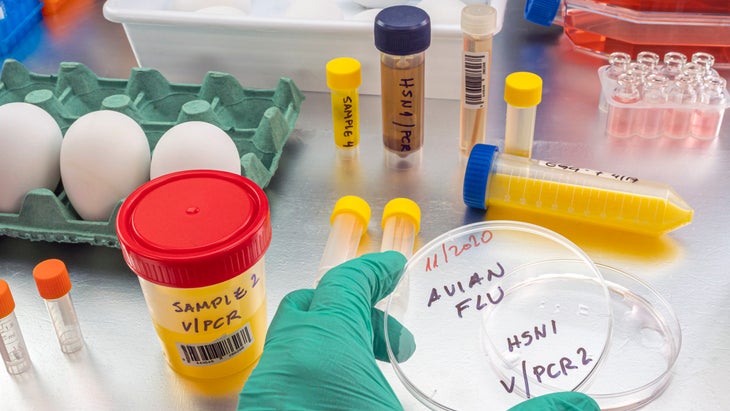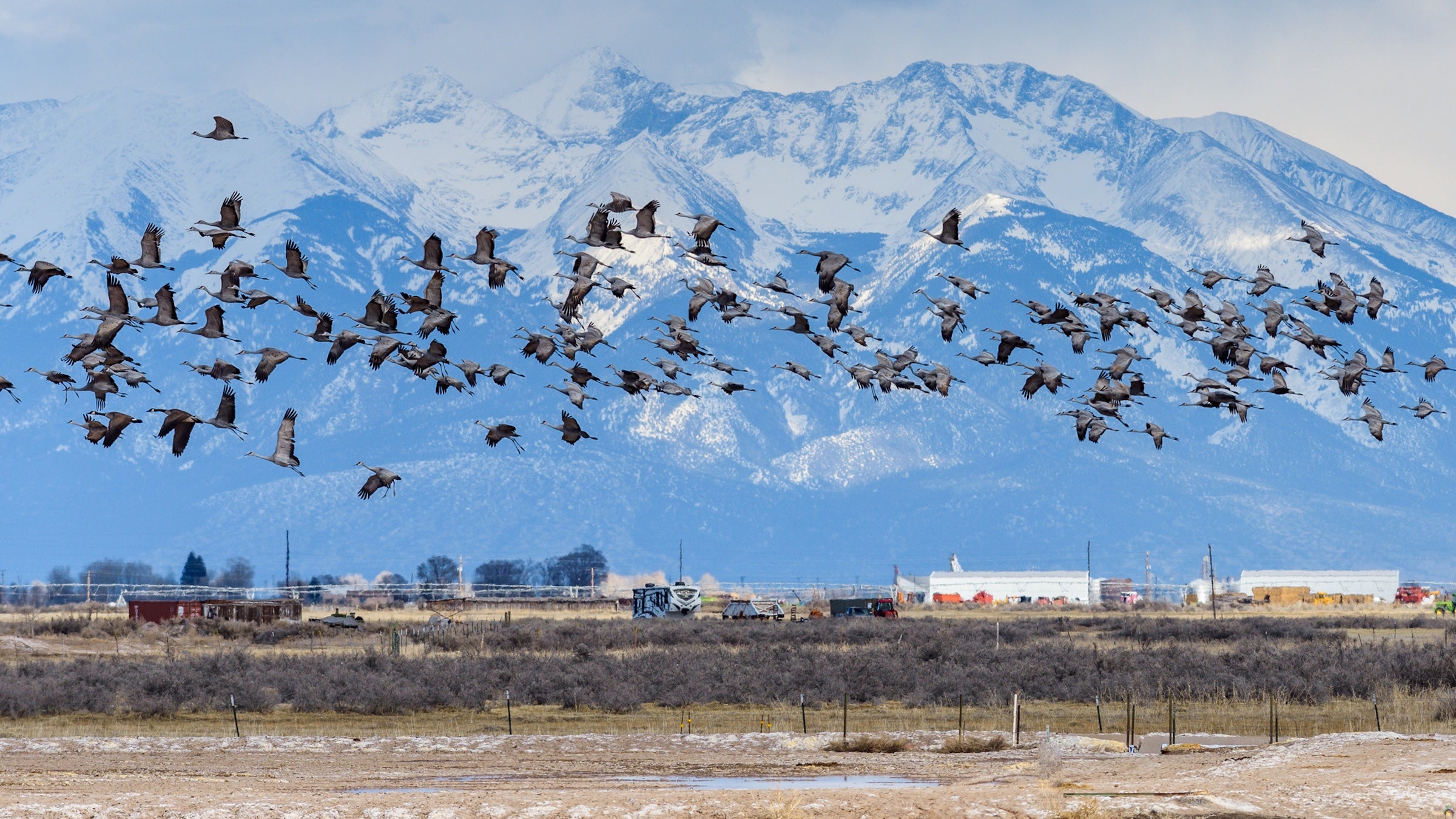I keep seeing headlines about bird flu, and it’s freaking me out. I have a big trip coming up to climb a bunch of fourteeners in Colorado, but it sounds like bird flu is all over the state right now. I’m wondering how worried I should be and whether I should cancel my vacation. What can I do to protect myself from getting the bird flu? — Anxious Traveler
If you’re just about packed for an adventure in a new state, your newsfeed might be giving you some jitters—especially if you’re consistently seeing headlines about a viral disease jumping from animals to people. You might feel worried about that hiking trip in Colorado, especially given the rampant bird flu outbreak in the state. However, the current H5 bird flu (also called avian influenza or H5N1), which has jumped from birds to cows to people, is much different than COVID-19, according to experts who spoke to �����ԹϺ���. Right now is a time to build awareness, not pull a Crowdstrike on your travel plans.
At the time of publication, there have been 14 cases of H5 bird flu in people since 2022. It’s running rampant in cows and has been since March of this year. The 179 cases in livestock herds across 13 states, with the majority occurring in Colorado. The state also recently reported��ten cases of the H5 bird flu in humans, making it the in humans in U.S. history.
Ten is still a relatively low number of human cases, but experts are concerned for several reasons.
“I’ve been studying flu��for fourteen years,” said , an assistant professor of veterinary and biomedical sciences at Penn State College of Veterinary Sciences, “and we’ve never seen a flu virus expand its host range quite this much in this short period of time.” Also called host range expansion, this defines a virus’s ability to increase the types of species it’s able to infect.
This host range expansion is interesting from a virology standpoint, Sutton said, and it’s also why the flu community is concerned about it.
What Exactly Is Bird Flu?
The bird flu we’re talking about is the H5 bird flu, a strain of Goose Guangdong virus, which gets its name from the animal and location in China where it was first found in 1996.
In 1997, the first human bird flu infections occurred in Hong Kong. “Sporadically,” Sutton said, “they’d be carried by migratory birds to Europe, where they would cause outbreaks. Then, they’d kill all the chickens, and the outbreak would go away.”
However, a few years ago, the bird flu became endemic in wild birds, and migratory birds from Europe brought it to North America. “These viruses used to be in one place,” Sutton said. “Now they’re everywhere.”
In recent weeks, over chickens have been infected in the U.S., the majority of which have been detected in Colorado. Up in Minnesota, 41,500 birds have been infected.
Bird flu can propagate in multiple ways. As the numbers show, it usually spreads rapidly between birds via mucus, saliva, or feces, according to the (CDC). However, people can contract it by breathing in these same particles or making contact with contaminated surfaces. The National Institutes of Health��(NIH) reported that infected cows are not very efficient in transmitting the virus via airborne particles but can infect other mammals with raw milk.

Where Bird Flu Cases Are Rising—and What You Should Be Aware of
Those infected with the bird flu primarily work on poultry and dairy farms with direct exposure to infected animals, said , a Yale Medicine infectious diseases specialist and assistant professor of medicine at Yale School of Medicine. As of right now, there’s still no evidence of human-to-human spread. Humans appear to be “functionally dead-end hosts” of this virus, he says, meaning people cannot transmit the virus to other humans.
Roberts said the risk of getting H5N1 is pretty low right now for most people. But there’s a reason why this virus is getting so much attention. For one, it’s clearly adapting to infect animals other than birds. According to Roberts, “One has to ask the natural question: How long is it until it jumps to humans in a sustained way?”
While the average person has a low risk of contracting H5N1, there is a broader food supply and labor issue highlighted by the spread of bird flu.
So far, Roberts said, the cases have been mild in humans—mostly conjunctivitis (a fancy term that refers to inflammation of the membrane that lines the eyeball and eyelid, a.k.a. “pink eye”). This is rather surprising as these not-so-serious cases “really bucked the trend of the historic fifty-percent death rate.”
Some��precautionary measures, like eyewear, weren’t necessarily adhered to because of extreme heat. In Colorado, five farm workers who contracted the virus—while culling an infected bird flock—were working in 104-plus degree temperatures, as .
“We need to take this seriously,” Roberts said. Many workers on farms are undocumented, which limits their ability to seek out healthcare even if they do get sick. Having logistics to test people onsite, he said, would help, along with resources to allow them to stay home if they are sick to avoid further spread.
“The concern right now is that the more these viruses get used to living and replicating in a mammal, the more they can adapt to do that,” Sutton said. The more humans are exposed to infected cows, the more likely they are to get infected. Every time that happens, it creates another opportunity for the virus to evolve.
“In essence, each human infection is like buying a lottery ticket for a lottery you don’t want to win,” said Roberts.
How Can I Protect Myself From Bird Flu When I’m Traveling?
If you’re planning on getting outside to soak up the last few weeks of summer, there are a few expert-backed precautions you should take note of.
“There’s very clear scientific data and evidence to show that from an infected cow, there is lots of virus in raw milk,” Sutton said. And in case you were previously inclined to do so: “If you find dead birds, I would avoid touching them,” Sutton said. Instead, contact animal control.
Aside from raw milk, Roberts suggests avoiding raw egg products. “All natural?��I’m all for it, but not when it comes to safety risks.” There are many other bacteria, such as listeria, that love raw milk and can be fatal in humans.
If you live in an area where there are currently ongoing bird flu outbreaks in dairy cows, Roberts also suggests steering clear of dairy farms.
Roberts notes that the CDC and the WHO both designate the risk of human infection as low at this time. Aside from visiting the affected farms or parts of the United States (or the world) where slaughtering chickens and eating raw meat occurs, the risk is pretty low. “I wouldn’t really change my behavior aside from avoiding those places,” he said.
For the��game hunters out there, the CDC recommends avoiding handling visibly sick birds and dressing birds in the field when possible—noting that birds that appear healthy can still carry the virus. The organization also recommends wearing gloves while dressing the bird and thoroughly sanitizing your hands afterward.
It’s worth noting that the current flu shots do not prevent you from getting the bird flu. But pre-pandemic vaccines for H5N1 are being prepared for human use, Sutton said, in case it does become a widespread problem in humans.
If your favorite local farm experiences an infection or outbreak, that doesn’t mean you have to cut them out of your grocery plans forever. As Sutton explained, the government reimburses farmers for culling chicken flocks to quell the infections and restart production. But in the meantime, if you can, avoid buying from farms with ongoing outbreaks, and, for obvious reasons, don’t book a slaughterhouse tour anytime soon.
Unless your travel plans revolve around visiting dairy farms, handling wild birds, or attending a raw milk tasting, you’re probably good to go.


